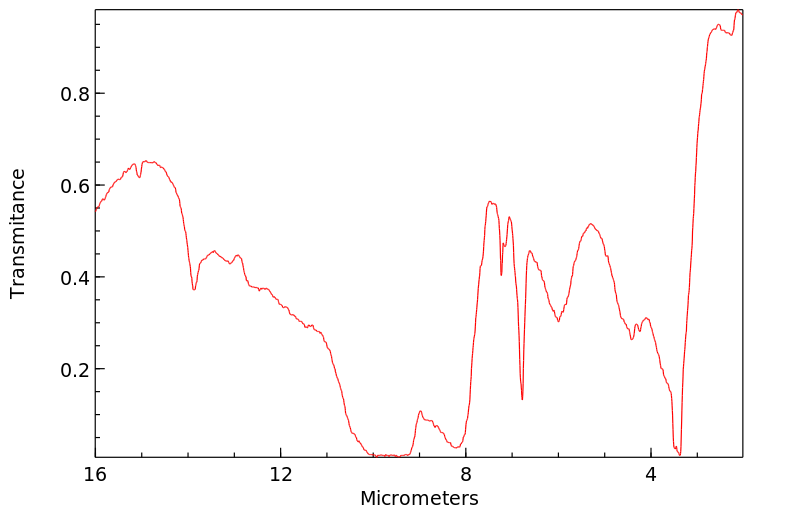磷酸二氢辛酯 | 3991-73-9
中文名称
磷酸二氢辛酯
中文别名
——
英文名称
monooctylphosphoric acid
英文别名
Octyl dihydrogen phosphate
CAS
3991-73-9
化学式
C8H19O4P
mdl
——
分子量
210.21
InChiKey
WRKCIHRWQZQBOL-UHFFFAOYSA-N
BEILSTEIN
——
EINECS
——
-
物化性质
-
计算性质
-
ADMET
-
安全信息
-
SDS
-
制备方法与用途
-
上下游信息
-
文献信息
-
表征谱图
-
同类化合物
-
相关功能分类
-
相关结构分类
物化性质
-
沸点:328.4±25.0 °C(Predicted)
-
密度:1.053 g/cm3
-
物理描述:Octyl acid phosphate appears as a corrosive liquid. About the same density as water and insoluble in water. Noncombustible. May severely irritate skin, eyes, and mucous membranes. Contact should be avoided.
计算性质
-
辛醇/水分配系数(LogP):1.9
-
重原子数:13
-
可旋转键数:8
-
环数:0.0
-
sp3杂化的碳原子比例:1.0
-
拓扑面积:66.8
-
氢给体数:2
-
氢受体数:4
SDS
上下游信息
反应信息
-
作为反应物:参考文献:名称:The Preparation of Mixed Dialkyl Phosphates摘要:DOI:10.1055/s-1974-23458
-
作为产物:参考文献:名称:GELLED HYDROCARBONS FOR OILFIELD PROCESSES, PHOSPHATE ESTER COMPOUNDS USEFUL IN GELLATION OF HYDROCARBONS AND METHODS FOR PRODUCTION AND USE THEREOF摘要:磷酸酯与金属源结合在一起用于凝胶化烃类物质,并公开了磷酸酯的制备方法。石油精炼塔中的结垢被归因于用于凝胶化油井压裂的磷酸酯中存在的杂质的蒸馏。改进的磷酸酯制备方法导致产品大幅减少或消除挥发性磷,即在250°C以下蒸馏的磷杂质,并增加使用磷酸酯形成的烃类凝胶的高温粘度。公开号:US20110046408A1
文献信息
-
Chromonic nanoparticles containing bioactive compounds申请人:Mohanty Sanat公开号:US20070086965A1公开(公告)日:2007-04-19A chromonic nanoparticle mixture prepared by combining (i) a continuous water-soluble polymer phase and (ii) a discontinuous chromonic phase comprising a chromonic material; and non-covalently crosslinking the resulting chromonic nanoparticles with a polyvalent cation salt.通过将(i)连续的水溶性聚合物相和(ii)包含色相材料的不连续色相相结合制备的色相纳米颗粒混合物;并且用多价阳离子盐非共价交联所得的色相纳米颗粒。
-
CARBONIC ACID ESTER AND MAGNETIC RECORDING MEDIUM申请人:IMAKUNI Akira公开号:US20080241599A1公开(公告)日:2008-10-02A carbonic acid ester is provided that is represented by the formula below and has a melting point of no greater than 0° C. (In the formula, R 1 and R 2 independently denote a saturated hydrocarbon group, R 1 is a branched chain, and R 2 is a straight or branched chain). There is also provided a magnetic recording medium that includes a non-magnetic support and, above the support, at least one magnetic layer including a ferromagnetic powder dispersed in a binder, the magnetic layer including the carbonic acid ester. Furthermore, there is provided a magnetic recording medium including a support and, above the support, a non-magnetic layer including a non-magnetic powder dispersed in a binder, and above the non-magnetic layer, at least one magnetic layer including a ferromagnetic powder dispersed in a binder, the non-magnetic layer and/or the magnetic layer including the carbonic acid ester.
-
LPA receptor agonists and antagonists and methods of use申请人:——公开号:US20030130237A1公开(公告)日:2003-07-10The present invention relates to compounds according to formula (I) as disclosed herein as well as pharmaceutical compositions which include those compounds. Also disclosed are methods of using such compounds, which have activity as agonists or as antagonists of LPA receptors; such methods including inhibiting LPA activity on an LPA receptor, modulating LPA receptor activity, treating cancer, enhancing cell proliferation, treating a wound, treating apoptosis or preserving or restoring function in a cell, tissue, or organ, culturing cells, preserving organ or tissue function, and treating a dermatological condition.本发明涉及根据所述的化合物的化学式(I),以及包括这些化合物的药物组合物。还公开了使用这些化合物的方法,这些方法具有作为LPA受体的激动剂或拮抗剂的活性;这些方法包括抑制LPA对LPA受体的活性,调节LPA受体的活性,治疗癌症,增强细胞增殖,治疗伤口,治疗凋亡或保护或恢复细胞、组织或器官的功能,培养细胞,保护器官或组织功能,以及治疗皮肤病症。
-
ALKYL H-PHOSPHONATES OF N,N'-DIALKYLIMIDAZOLIUMS AND OF QUATERNARY AMMONIUMS AND USES THEREOF申请人:Nguyen Hoang-Phuong公开号:US20100121075A1公开(公告)日:2010-05-13The application relates to the use of a salt associating an ammonium cation with an alkyl H-phosphonate anion of the following formula (I) in which R is a hydrocarbon radical, the pointed bond can be present or not, the radical R 3 being then present or absent, as an ionic liquid. The ammonium cation is preferably an imidazolium cation. This ionic liquid is particularly useful in the field of green chemistry as a substitute for organic solvents. The application also relates to a method for preparing such a salt by the direct dealkylation of the corresponding dialkylphosphite by the appropriate nitrated base, in one step and without any solvent. The application also relates to a method for preparing mixed methylated phosphites.
-
Fatty Alcohol Phosphates are Subtype-Selective Agonists and Antagonists of Lysophosphatidic Acid Receptors作者:Tamas Virag、Don B. Elrod、Karoly Liliom、Vineet M. Sardar、Abby L. Parrill、Kazuaki Yokoyama、Gangadhar Durgam、Wenlin Deng、Duane D. Miller、Gabor TigyiDOI:10.1124/mol.63.5.1032日期:2003.5.1A more complete understanding of the physiological and pathological role of lysophosphatidic acid (LPA) requires receptor subtype-specific agonists and antagonists. Here, we report the synthesis and pharmacological characterization of fatty alcohol phosphates (FAP) containing saturated hydrocarbon chains from 4 to 22 carbons in length. Selection of FAP as the lead structure was based on computational modeling as a minimal structure that satisfies the two-point pharmacophore developed earlier for the interaction of LPA with its receptors. Decyl and dodecyl FAPs (FAP-10 and FAP-12) were specific agonists of LPA2 (EC50 = 3.7 ± 0.2 μM and 700 ± 22 nM, respectively), yet selective antagonists of LPA3 ( K i = 90 nM for FAP-12) and FAP-12 was a weak antagonist of LPA1. Neither LPA1 nor LPA3 receptors were activated by FAPs; in contrast, LPA2 was activated by FAPs with carbon chains between 10 and 14. Computational modeling was used to evaluate the interaction between individual FAPs (8 to 18) with LPA2 by docking each compound in the LPA binding site. FAP-12 displayed the lowest docked energy, consistent with its lower observed EC50. The inhibitory effect of FAP showed a strong hydrocarbon chain length dependence with C12 being optimum in the Xenopus laevis oocytes and in LPA3-expressing RH7777 cells. FAP-12 did not activate or interfere with several other G-protein-coupled receptors, including S1P-induced responses through S1P1,2,3,5 receptors. These data suggest that FAPs are ligands of LPA receptors and that FAP-10 and FAP-12 are the first receptor subtype-specific agonists for LPA2.对溶血磷脂酸(LPA)的生理和病理作用进行更全面的理解,需要针对不同受体亚型的激动剂和拮抗剂。本文报道了含有4至22个碳的饱和碳氢链的脂肪醇磷酸盐(FAP)的合成和药理学特性。选择FAP作为主要结构是基于计算模型,该模型以满足先前为LPA与其受体相互作用而开发的两点药效团的最小结构为基础。癸基和十二烷基FAP(FAP-10和FAP-12)分别是LPA2的特异性激动剂(EC50分别为3.7±0.2μM和700±22nM),同时也是LPA3的选择性拮抗剂(FAP-12的K i为90nM),而FAP-12对LPA1是弱的拮抗剂。FAP既不能激活LPA1也不能激活LPA3受体;相反,LPA2被含10至14个碳链的FAP激活。通过计算模拟,将每个化合物对接在LPA结合位点,来评估单个FAP(8至18)与LPA2的相互作用。FAP-12显示最低的对接能,与其较低的观察EC50一致。FAP的抑制效应显示出强烈的碳氢链长度依赖性,在非洲爪蟾卵母细胞和表达LPA3的RH7777细胞中,C12是最适长度。FAP-12未激活或干扰包括S1P1,2,3,5受体介导的S1P反应在内的几个其他G蛋白偶联受体。这些数据表明FAP是LPA受体的配体,且FAP-10和FAP-12是首批针对LPA2受体亚型的特异性激动剂。
表征谱图
-
氢谱1HNMR
-
质谱MS
-
碳谱13CNMR
-
红外IR
-
拉曼Raman
-
峰位数据
-
峰位匹配
-
表征信息
同类化合物
(11bR,11''bR)-2,2''-[氧双(亚甲基)]双[4-羟基-4,4''-二氧化物-二萘并[2,1-d:1'',2''-f][1,3,2]二氧磷杂七环
(11aR)-10,11,12,13-四氢-5-羟基-3,7-二-1-萘-5-氧化物-二茚基[7,1-de:1'',7''-fg][1,3,2]二氧杂磷杂八环
鲸蜡基磷酸-鲸蜡基磷酸二乙醇胺
高氯酸N,N,N',N',N'',N'',N''',N'''-八甲基二磷四酰胺(1:1:2)锂
非对称二乙基二(二甲基胺基)焦磷酸酯
非4-烯-5-基二苯基磷酸酯
雷公藤甲素O-甲基磷酸酯二苄酯
阿扎替派
间苯二酚双[二(2,6-二甲基苯基)磷酸酯]
锌四戊基二(磷酸酯)
银(1+)二苄基磷酸酯
铵4-(2-甲基-2-丁炔基)苯基4-(2-甲基-2-丙基)苯基磷酸酯
铵2-乙基己基磷酸氢酯
铵2,3-二溴丙基磷酸酯
钾二己基磷酸酯
钾二十烷基磷酸酯
钾二乙基磷酸酯
钾二(8-甲基壬基)磷酸酯
钾[5,7,7-三甲基-2-(1,3,3-三甲基丁基)辛基]磷酸酯
钾2-己基癸基磷酸酯
钴(2+)十三烷基磷酸酯
钡4,4-二乙氧基-2,3-二羟基丁基磷酸酯
钡1,3-二羟基-2-丙基磷酸酯
钠辛基氢磷酸酯
钠癸基氢磷酸酯
钠异丁基氢磷酸酯
钠二苄基磷酸酯
钠二戊基磷酸酯
钠二(十八烷基)磷酸酯
钠二(2-丁氧乙基)磷酸酯
钠O,O-二乙基磷酰蔷薇l烯酸酯
钠4-氨基苯基氢磷酸酯水合物(1:1:1)
钠3,6,9,12,15-五氧杂二十八碳-1-基氢磷酸酯
钠2-乙氧基乙基磷酸酯
钠2,3-二溴丙基磷酸酯
钛酸酯偶联剂NDZ-201
钙敌畏
钙二钠氟-二氧代-氧代膦烷碳酸盐
钙3,9-二氧代-2,4,8,10-四氧杂-3lambda5,9lambda5-二磷杂螺[5.5]十一烷3,9-二氧化物
野尻霉素6-磷酸酯
酸式磷酸戊酯
酚酞单磷酸酯
酚酞单磷酸环己胺盐
酚酞二磷酸四钠盐
酚酞二磷酸四钠
辛基磷酸酯
辛基二氯膦酸酯
辛基二氯丙基磷酸酯
辛基二丙基磷酸酯
赤藓糖醇4-磷酸酯







